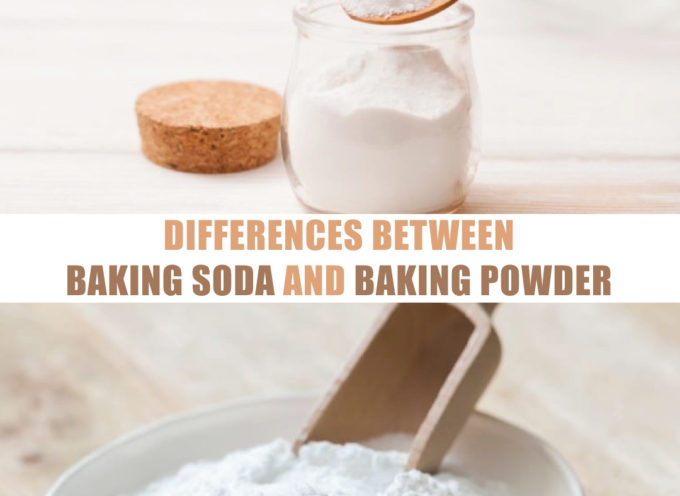Climate change is making the world a different place. There are more floods, droughts, wildfires, heat waves and other extreme weather events. Animal species around the world are either shifting habitat locations or simply dying off. Even humans are migrating due to a warmer world.
But there is one effect that will hit many of us right in the gut. Certain foods could disappear thanks to our changing climate. Brace yourself: Here are 10 foods you’ll probably be sad to see go.

1. Coffee

According to the Union of Concerned Scientists, just about every coffee growing region in the world is being threatened by higher temperatures, longer droughts, and more intense rainfall and plant diseases. Coffee-producing countries are seeing their yields decline already. If temperatures continue to increase, 80 percent of the land in Brazil and Central America, where the most popular coffee bean, Arabica, is currently grown, will be unsuitable by the year 2050. During that same time period, a 50 percent decline in growing regions around the world can be expected.
2. Beer

In 2015, 42 beer companies signed the Brewery Climate Declaration to call attention to how climate change is threatening the industry, while committing to lowering their own carbon footprints. Warmer temperatures and extreme weather in the Pacific Northwest are damaging hop plants, which means lower yields.
At the same time, high demand for beer has pushed the price of hops up by more than 250 percent over the last decade. Clean water is also becoming an issue in the west with droughts and reduced snowpack.
3. Chocolate

Unlike coffee, rising temperatures alone isn’t necessarily putting this food on the endangered list. Cacao trees thrive in hot, humid environments, and can only be grown on land about 20 degrees north and south of the equator.
The rainforest regions near the equator are perfect for the cacao trees. But the problem is that while the temperature is increasing, the amount of rainfall in these areas is not increasing, so the heat is sapping the moisture from the plants and the ground, decreasing humidity in these regions.
4. Potatoes

A staple of Peruvian culture for more than 8,000 years, the potato is now at risk. With close to 4,000 varieties, it is generally accepted that the potato originally came from Peru, which is home to the International Potato Center gene bank. But climate change is pushing potato plants higher and higher into the Andes Mountains, and at a certain point the plants will have nowhere left to go.
5. Peanut Butter

Parents may need to find something else to go with the jelly in this kids’ lunchtime staple. Peanut plants are annuals, meaning they have one season each year to produce peanuts. The plants are also finicky, and do best with about five months of consistently warm weather and about 20 to 40 inches of rain.
Peanuts are grown mostly in the Southern US, east of the Rocky Mountains, an area that had a particularly bad drought in 2011, when many plants died and didn’t produce any peanuts at all. As droughts and heat waves become more common, the price of peanut butter could continue to rise, and farmers will have to figure out ways to make their peanut plants hardier.
6. Apples

In 2011, an international team of scientists published a study which found just that: Temperate fruit and nut trees like the apple tree, which need a certain period of winter chill to produce economically practical yields, could be affected by global warming as winter temperatures rise. They said farmers should prepare for a warmer future by breeding cultivars with lower chilling requirements.
Such apples will likely taste different from the ones we have today, according to a Japanese study which found that rising temperatures are causing apple trees to bear fruit sooner, making them softer and sweeter.
7. Seafood


Climate change is affecting all kinds of seafood, from Atlantic lobsters to Pacific salmon. Lobsters, for example, are cold-blooded. As the temperature of the ocean rises, lobsters have to use more energy just to exist, having less energy for feeding, growth, and reproduction. At a certain temperature, it actually causes them physiological stress to have to work so hard for oxygen.
Another example: salmon, higher water temperatures are pushing up the spawning cycle and increasing the mortality rate for the eggs and the fry. For the ones that do survive, the temperatures aren’t ideal for young salmon to grow.
8. Wine

If we don’t keep the increase of the global surface temperature to a maximum of 2°C (some say 1.5°C) to prevent the worst impacts of climate change, fermented grape juice from traditional winemaking regions could one day become a thing of the past.
Grapevines are extremely sensitive to their surrounding environment.The variation in yield from season to season is more than 32 percent. And with temperatures steadily increasing, viniculture around the world is changing. Changes are already afoot in France, one of the largest wine producers in the world.
9. Rice

According to a 2005 report by the Food and Agriculture Organization of the United Nations, “temperature increases, rising seas and changes in rainfall patterns and distribution expected as a result of global climate change could lead to substantial modifications in land and water resources for rice production as well as in the productivity of rice crops grown in different parts of the world.”
A 2005 report by the United States Department of Agriculture found that the viability of rice-growing land in tropical areas could decline by more than 50 percent during the next century.
10. Guacamole


Around 8 million pounds of guacamole are consumed during the Super Bowl, but football fans might soon have to find something else to dip their tortilla chips into. Scientists from the Lawrence Livermore National Laboratory predict as much as a 40 percent decrease in avocado production over the next 30 years due to increasing temperatures brought on by climate change.
Food may be one of the most apparent and immediate ways for many of us will feel the impact of climate change. It’s not the end of the world, but it will be a big enough deal to be worth our concern! We certainly don’t need another reason to fight climate change. But a good one would be to save some of our favorite and the world’s most important – foods from extinction.








No comments!
There are no comments yet, but you can be first to comment this article.